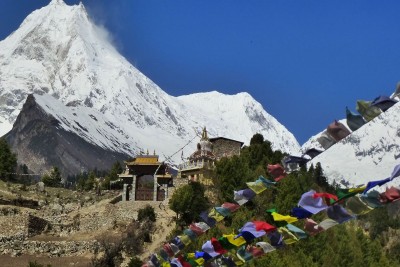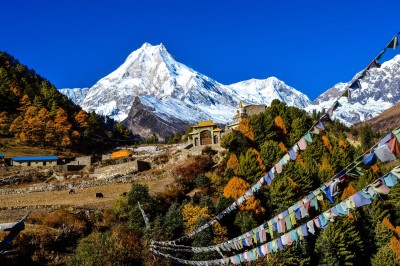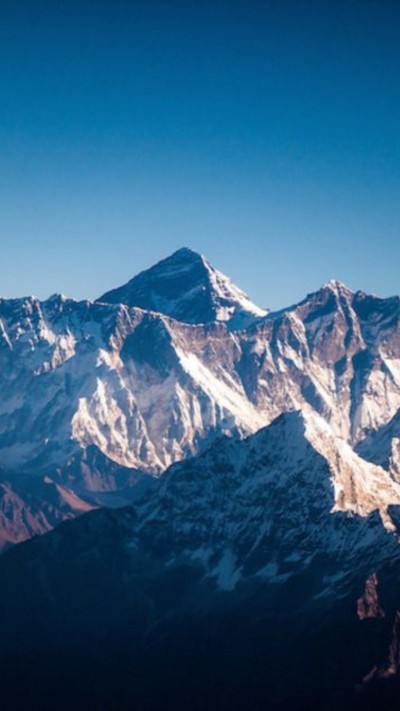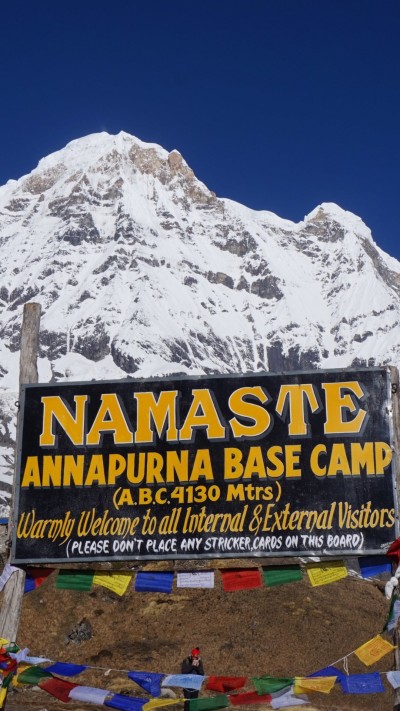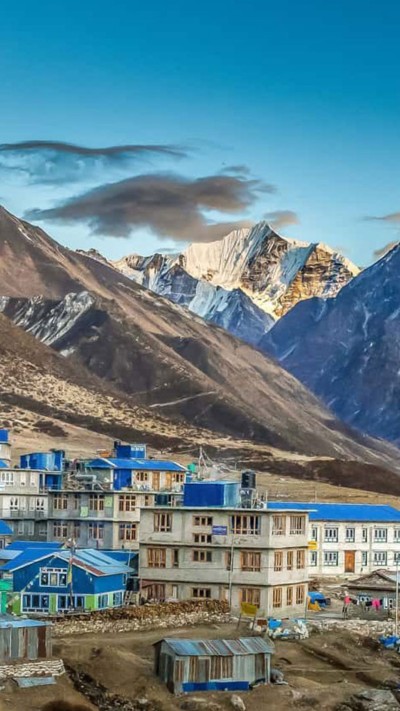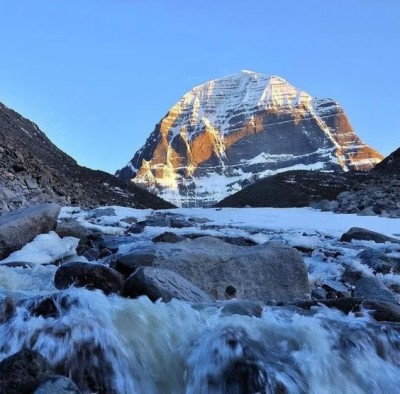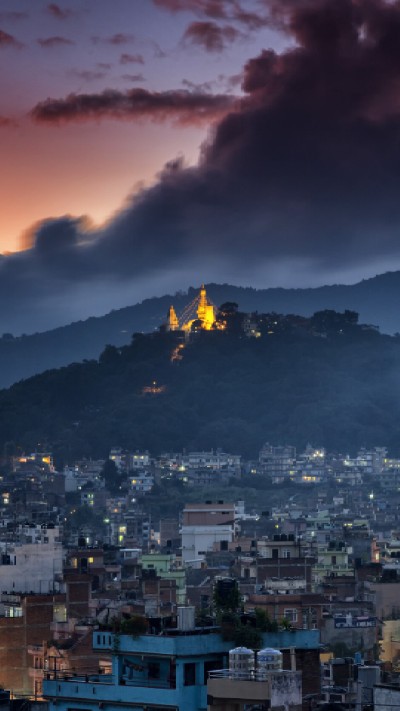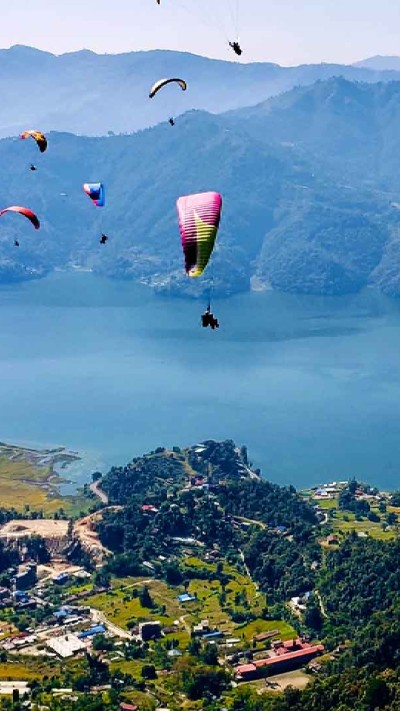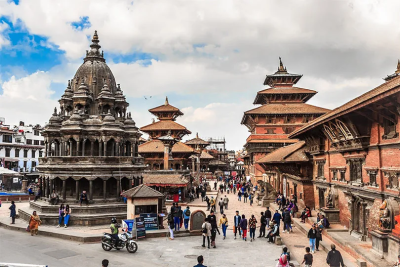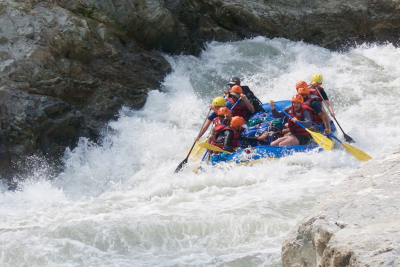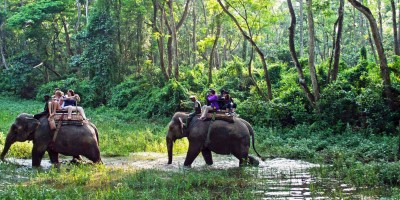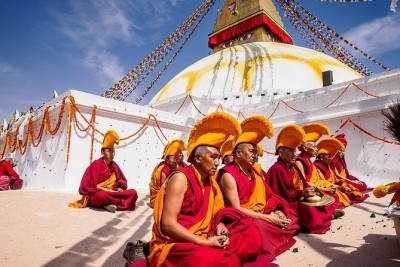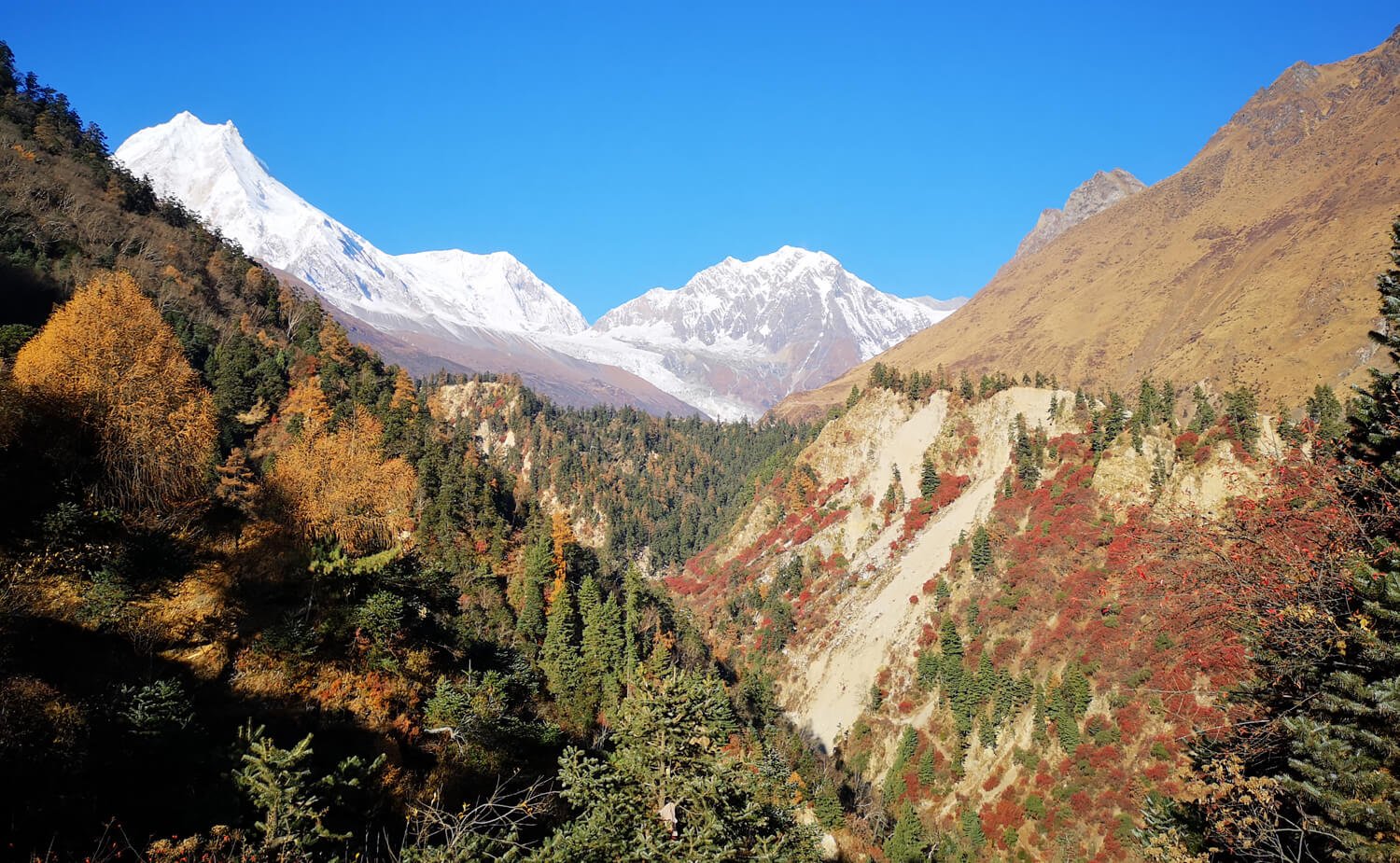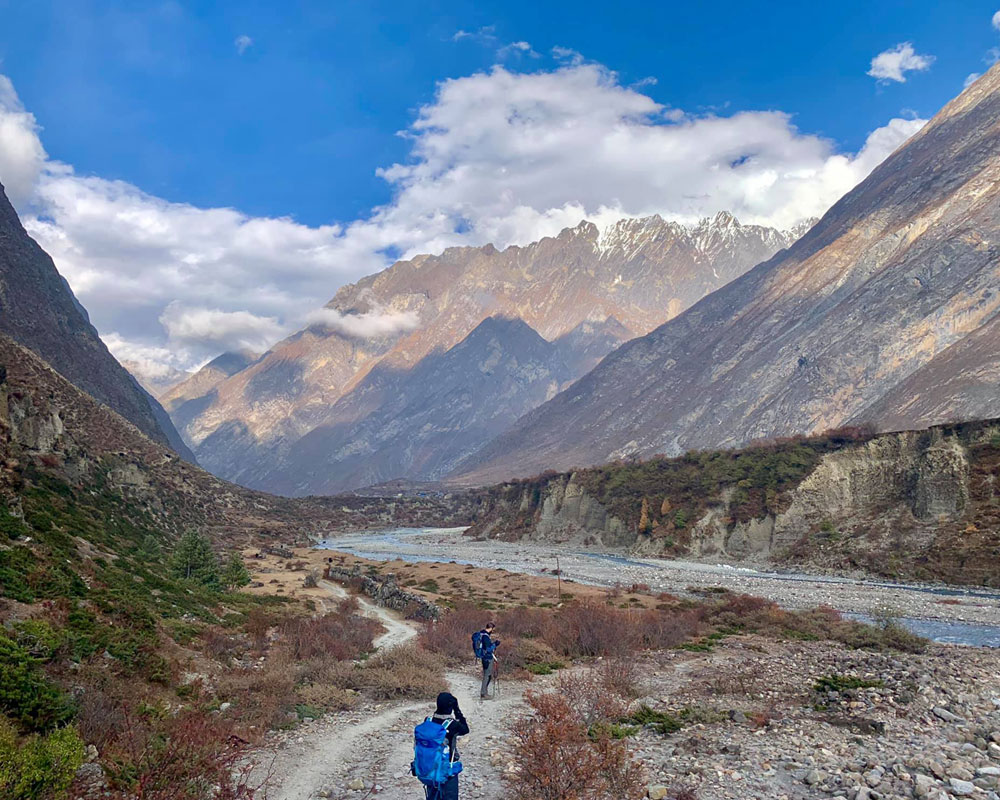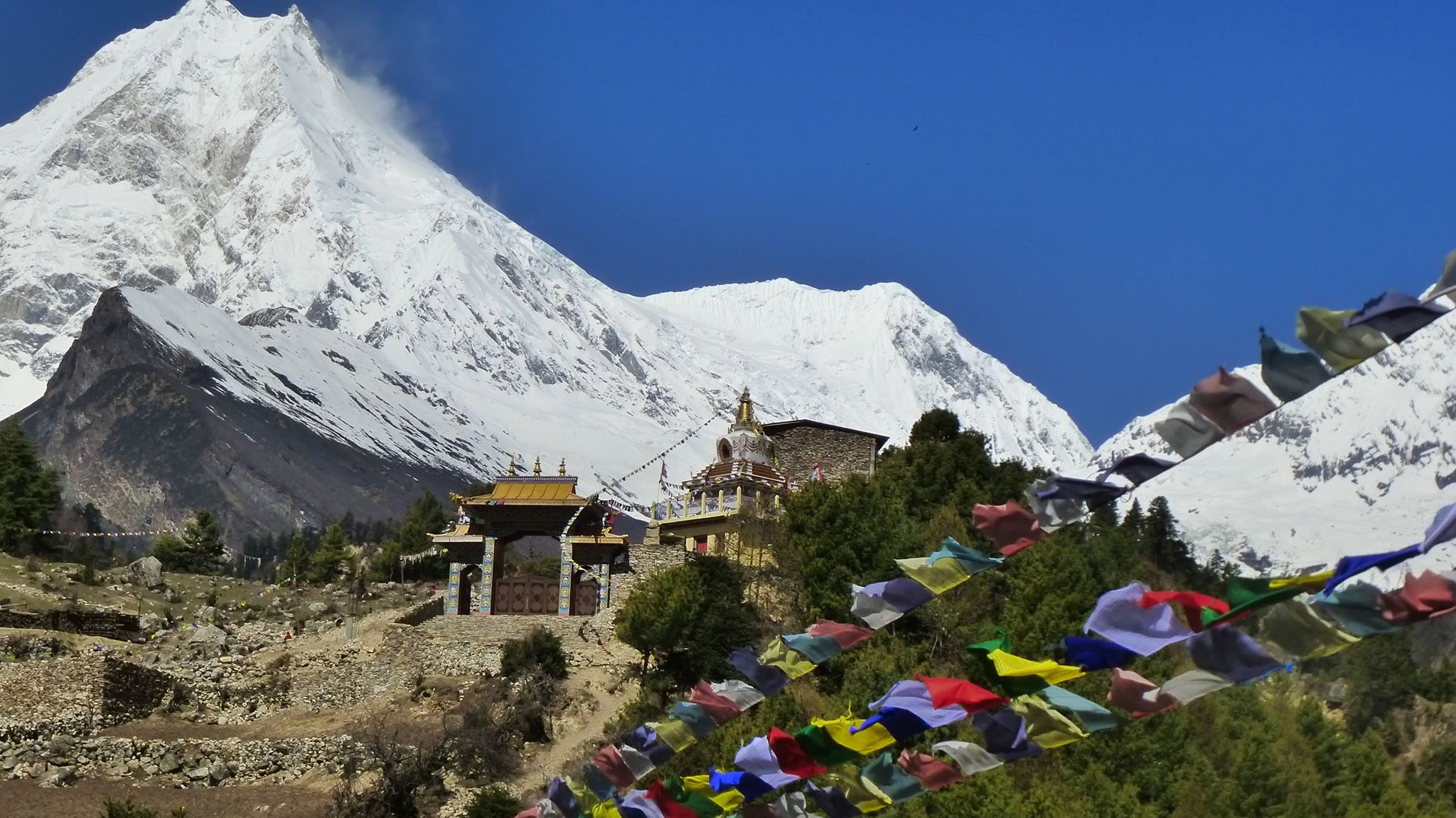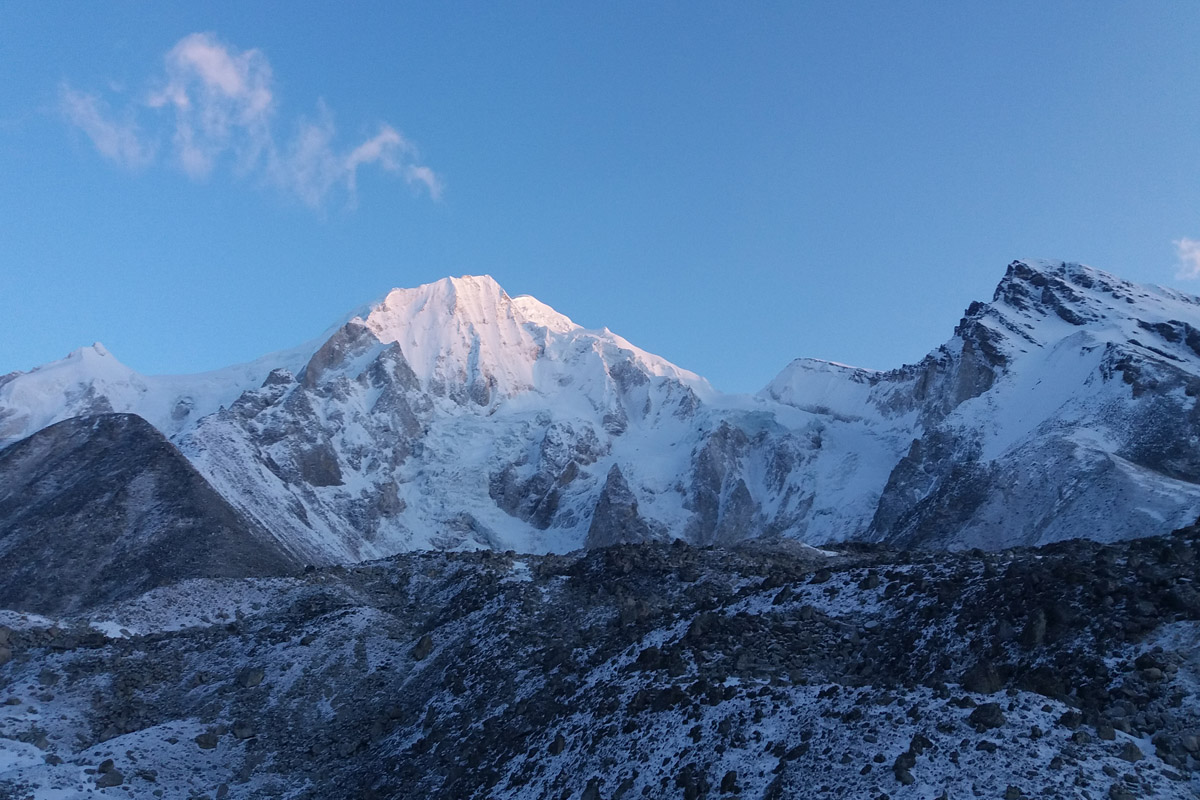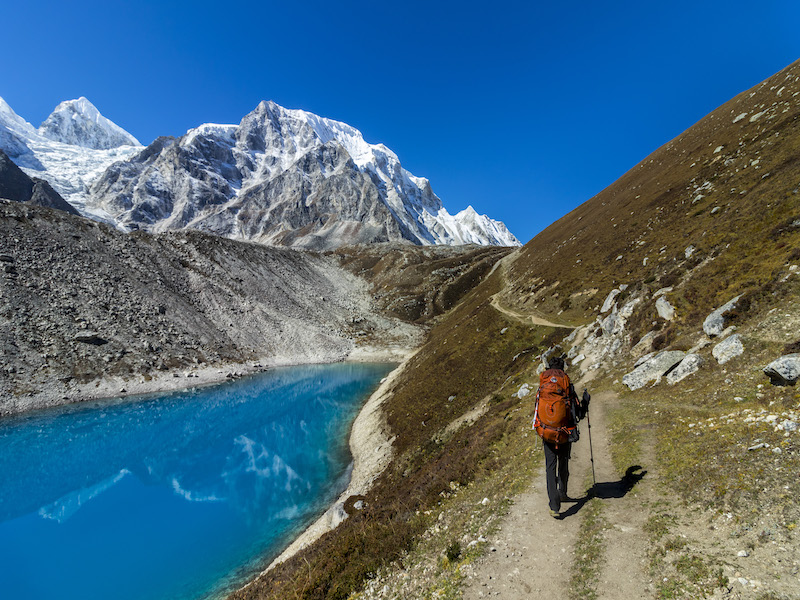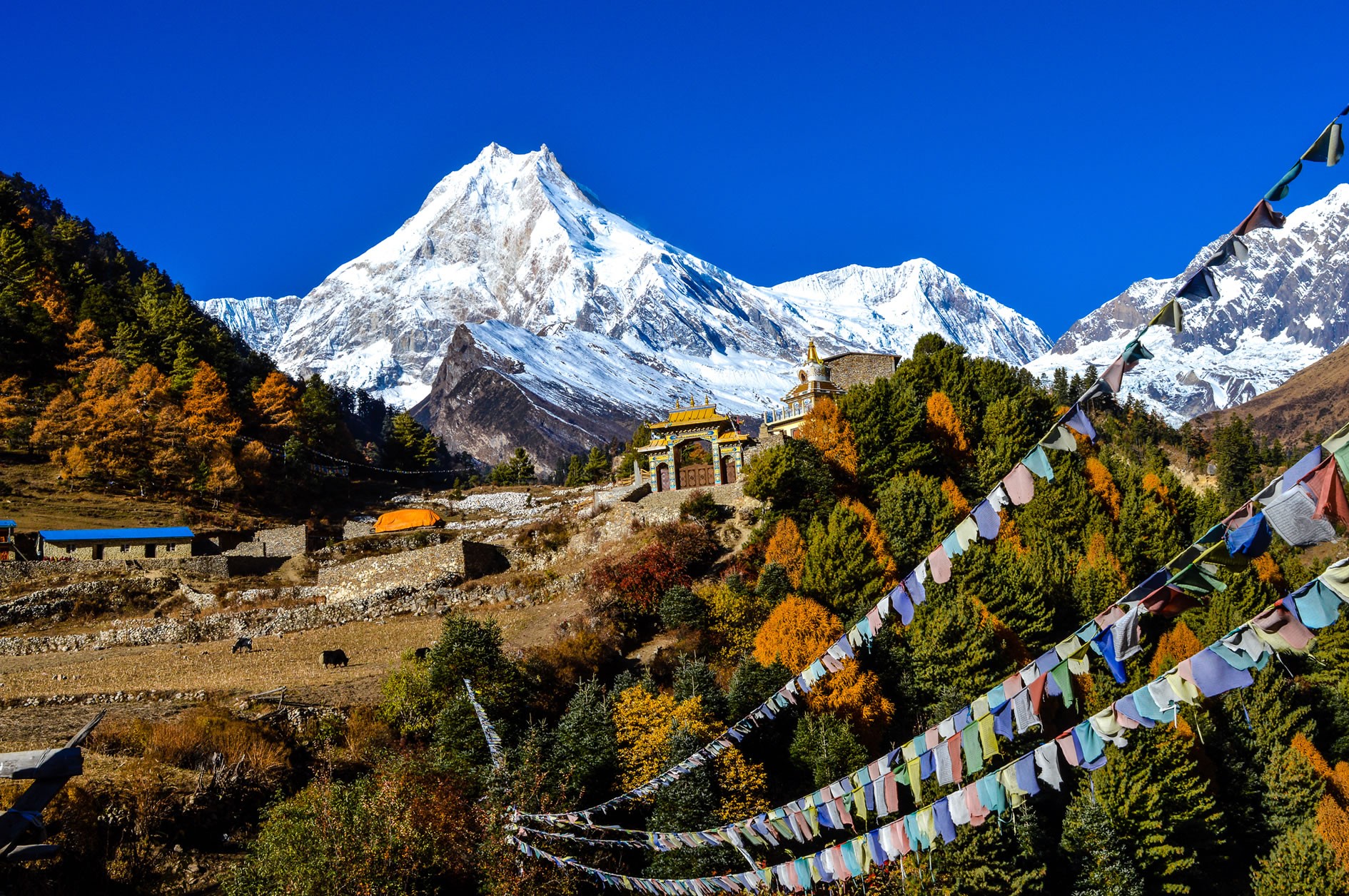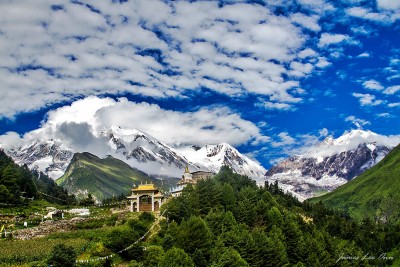Tsum Valley And Ganesh Base Camp Trek
Trekking through the remote and culturally rich Tsum Valley while enjoying the panaromic views of the Ganesh Himalayas at Base Camp offers a remarkable adventure in the heart of the Nepalese Himalayas.
Overview
Tsum Valley and Ganesh Base Camp Trek is remote area trekking in Nepal. It has been only a decade and a year since the trail has been opened for trekking and tourism purposes. Thus, the natural beauty and the all the glorious details of this place is unspoiled and intact in its purest form. Together with that, you can get the majestic views of the mountains like Manaslu, Sringi Himal, Boudha Himal and many other beautiful peaks. Through trekking in Nepal, you get to see the different types of life style of Nepal. Tsum valley in particular is one of the remote trekking destination of Nepal but with rich ancient art, culture and religion Himalayan region. The trails are filled with stunning landscapes, deep valley and pathways through cliffs, roaring rivers, forest and the people with large cattle. These cattle are the constant companion throughout the trek.
The valley possess the ancient history of pioneers of Buddhist religion. It is believed that saint Milarewa has meditated in this place. Therefore, the villager strongly follow Buddhist religion. At the same time, ancient remains of the Tsum Kingdom are still found. Maybe due to poor development of infrastructure, these remains are still intact as they used to be.
Journey To Tsum Valley and Ganesh Himal Base Camp
Tsum valley trek start with a fun sightseeing tour of UNESCO listed world heritage sites of Kathmandu valley. You will be visiting the cultural heritage sites like PAshupatinath, Swayambhunath, Patan Durbar Square and Boudhnath to learn the spiritual and historical side of Nepal. The next day, you will take a scenic drive to Arughat from Kathmadnu. Upon reaching Arughat, you can officially start your trek from Arughat to Soti Khola. From there onwards, you will see some spectacular views and traverse through many villages crossing many suspension bridges. Ganesh Himal Base Camp is another exciting add on the trip. From the Base Camp, you will get the close up view of Ganesh Himal.
Tsum Valley and Ganesh Himal Base Camp Trek gives you phenomenal memory of trekking in Nepal. Not only the place is beautiful but this ancient villages have its own charm that attract the visitors. Join Himalayan Social Journey to visit this beautiful place and to make a lifetime memory.
Highlights
- A picturesque journey from Kathmandu to Arughat
- Exploring the Tibetan culture and way of life
- Waterfalls, streams and caves on the way
- Fairly easy trek without fear of altitude sickness
- Wilderness animals such as the Blue Sheep and the Himalayan Thar
- Several of the buddhist temples
- Prayer flags and the walls of Mani along the road
- Spectacular views of mountains such as Ganesh Himal and Himal Chuli
- Wonderful forests of pine, juniper and rhododendron.
Outline Itinerary ( 22 Days ) Expand all +
Upon your arrival in Kathmandu, our representative will meet you at Tribhuvan International Airport, extend a warm welcome, and transfer to your hotel. Take advantage of this day to adjust to the new time zone and immerse yourself in the lively atmosphere of Kathmandu. Orientation Program will be at 5 PM. After orientation program welcome Dinner with guide.
Show more...
Following breakfast, our knowledgeable tour guide from Himalayan Social Journey will escort you on a captivating journey to explore Nepal's UNESCO-listed world heritage sites. Today's itinerary includes visits to the renowned Pashupatinath temple, the majestic Bouddhanath stupa, the tranquil Swoyambhunath Stupa and the historic Patan Durbar Square.
Show more...
After breakfast, embark on a scenic drive to Arughat, taking in the picturesque landscapes along the way. Upon reaching Arughat, your trek begins, heading towards the charming village of Soti Khola. As you traverse the trail, you'll experience the serenity of rural Nepal, crossing lush forests, terraced fielda,and rivers , preparing you for the journey ahead.
Show more...
Today's trek takes you through stunning and diverse landscapes as you traverse numerous suspension bridges, enter the lush Sal forests, and ascend to a ridge that offers breathtaking view of th Budhi Gandaki's powerful rapids below. The rugged trail undulates through the terrain, leading you past cascading waterfalls, along steep cliffside paths, and eventually down to terraced fields before rising again to reach the picturesque Gurung village of Labubesi. After skirting around a rocky outcrop, the valley opens wide, and the Budhi Gandaki weaves through exapnsive gravel bars. From there, descend to the river's sandy shores, walk along smooth, rounded stones, and continue your journey over a side ridge before finally making your way to the welcoming village of Machha Khola for the night's rest.
Show more...
Your day begins with an easy morning break as you pass through Khorlabesi. Along the way, you'll take a break at Tatopani to explore the natural hot water springs. Afterward, you'll continue your journey through a forested path leading to Dhoban. From Dhoban, you will descend to the banks of the Yaru Kholaat Yaru Beshi,and then ascend a higher trail that takes you through fields before reaching Jagat.
Show more...
Your trail moves uphill and then continues along a flat, leveld path towards sandy banks. The path becomes steep near Sridibas, where you'll cross a dramatic suspension bridge over the river before climbing up to the beautiful village of Philim. From Philim, you lose elevation and enter the Tsum valley. As you continue a bit further with another climb , you'll reach Lhokpa, where you'll be treated to breathtaking views of Ganesh Himal and Shringi Himal.
Show more...
Today you will cross three suspension bridges in the morning before ascending steeply for the rest of the day. As you near the end of your journey, the path becomes more gradual, leading you along a pleasant trail until you reach Chumling. Through the day's walk is short, the long ascent makes it quite tiring, with a actual gain in elevation.
Show more...
Leaving behind Chumling, you begin your walk to Chhokang Paro, also known as Paro is also Chhekemper located on the top of a hill. The trail follows one of the tributaries of the Budhi Gandki river for most of the day, passing a small monastery along the way.After crossing another tributary, the past ascends the hill to reach Chekkampar, which consists of two distincts settlements: Chokkang and Paro.Positioned on a hilltop, Chhemkpar serves as a vintage point, offerring close view of the majestic Ganesh Himal Range.
Show more...
Today, you will continue your journey along a gentle and scenic path, passing through charming villages such as Leeru and Ngyaku. As you make your way towards Lamagaun, you will enjoy the tranquil atmosphereand the beautiful landscapes that accompanies the route. Once your arrival at Lamagaun., you'll have chance to explore the village, immersing yourself in local culture and taking in the natural beauty that surrounds you.
Show more...
Today, you will visit the famous Milapera Cave and explore the various gompas in Lama Goan.As we wander through the village, you'll delve through the local culture , tradition and natural beauty of the surroundings.
Show more...
You will continue your journey to Nile that goes through series of ups and downs to Mu Gompa. Mu Gompa is one of the oldest existing monasteries in Tsum Valley region of Nepal. Due to its remote access, no human settlement is found in area around Mu Gompa. This Gompa exists at the highest and farthest point in Tsum valley. Yaks carrying goods to and from Tibet can be seen on the way.
Show more...
You will descend down the valley to Chhule and continue walking down to Phurbe. You will stay on the east bank of the Siyar Khola and cross flat boulder-covered plains and follow the power lines to Rachen Gompa/ Nunnery Gompa. You will visit this ancient gompa and interact with the monks and nuns living in the gompa.
Show more...
After visiting the Nunnery Gompa, you will retrace your steps and make your way back to Chhemkampar, enjoying the familiar route along the way.
Show more...
After having quick breakfast, you will leave Dumje and choose the descending trail that enthralls with scenic views of Manaslu Mountain and Ganesh Mountain. Moving through few dispersed settlements, you will arrive at Lungdang Gompa. Lungdang Gompa is a Buddhist nunnery where males are not allowed an entrance. The area around Lung Dang Gompa offers the best sunrise view over Ganesh Himal range. Stay overnight in a camp nearby Lung Dang Gompa.
Show more...
Passing through small pasture lands, a monastery, and crossing the Laudang River, the trail further ascends through pine and rhododendron forests. Climbing along with the pines, you will further pass the lateral moraine of Torogumba Glacier, and through passing along seasonal yak huts and moraine wall, you will reach the Ganesh Himal Base Camp (4200m).After watching magnificient view of Ganesh Himal, you will finally return to Lung Dang Gompa.
Show more...
Leaving Lung Dang Gompa, you will descend down to Ripchet.The village of Ripchet is lovely with big houses. It offers you the chance to learn about the local people 's hospitality history, practices and lifestyles.After that you will descend down through pine forests with wildlife and descend down the river until you will reach Dobhan.
Show more...
From Rupchet, you will further descend down along the trail to Yaru Phat, taking in the breathtaking mountains views along the way.As we approach Yaru Phat, the train remains managable with the sound of river below. Upon reaching Yaru Phat, you will settle for the eveningsurrounded by the natural beauty of the region.
Show more...
You will pass through the same ridge and descend the familiar stairs at Thulo Bhrayang, crossing suspension bridges on your way to Dhoban.From there you will retrace your journey back to the Hot Springs at Tatopani and continue onwards to Macchakhola to Lapubensi.
Show more...
You'll continue descending down along the slope of the Budhi Gandaki River. Before reaching Sotikhola, you will cross another suspension bridge as you ascend into the valley.As you walk towards the Sotikhola, you will enjoy the view of stunning water fall ahead.Proceeding further, you will eventually reach Arughat.
Show more...
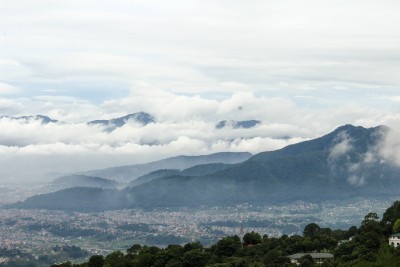 Youwill depart for Kathmandu in the morning, starting with a newly built but unpaved road until Dhading Besi, where some bumps are expected due to the current state of the route. From Dhading Besi, the road transitions to concrete, offering a smoother but still mountainous drive. While the terrain can be uneven at times, the journey offers scenic views, and we anticipate arriving in Kathmandu, by late morning or early afternoon, depending on traffic and weather conditions
Youwill depart for Kathmandu in the morning, starting with a newly built but unpaved road until Dhading Besi, where some bumps are expected due to the current state of the route. From Dhading Besi, the road transitions to concrete, offering a smoother but still mountainous drive. While the terrain can be uneven at times, the journey offers scenic views, and we anticipate arriving in Kathmandu, by late morning or early afternoon, depending on traffic and weather conditions
After having breakfast, spend a leisurely day exploring Thamel. Stroll through the vibrant streets, taking in the sights ans sounds of the bustling market. Visit local shops, selling handicrafts, souveniors.
Show more...
Use your last morning in Kathmandu according to your flight time. Pack your things, check out of the hotel, Head to Tribhuvan International Airport for your departure. Wishing you a safe and pleasant journey back home!
Show more...Departures & Availability
What's inside the package?
Inclusions
Exclusions
Additional Information
Best time to do the trek
The monsoon that is almost everywhere in Nepal is in the fall (October-Nember) between the mid-June and the end of September, the most popular season is the summer, where the skies are washed and the wetter looks are superior, springs (March-May) are another common time for trekkers. Likewise, most people are unwilling to walk during the winter when the temperature in high elevation is too cold and snow can block high passes. The trail is unworkable and dangerous during the summer / mountain season.
Trekking Journey
The trek begins on a spectacular drive to the ancient village of Baluwa, Barpak or Laprach, following the lush Daroundi Valley, and ascending to the Mamche Danda (2800 m), offering a wide range of Himalayans such as the Ganesh Himala, Buddha Himal, Shringi Himal, and the Himal Lamjung. You could take a snap of the beautiful area from Mamche Danda to Pusu Danda before heading down to Laprak. Finally, Laprak's trek from Barpak is sufficient to reach the Budigandaki River. The trip will help the acclimation process and shape the legs and lungs with the help of the fresh mountain breeze.
Required fitness level for this trek
Our daily trekking itinerary is 5-7 hours in lower altitude of 3500m and normally lasts from 3-4 hours daily on high mountains altitude excess of 3500 m. Steeper slope trekking is physically difficult than low latitudes trekking. This is a distant mountain trip, with long ascents, steep descents and straight roads after a straight trekking trails. For trekking, past hiking experience will be an added benefit, as it requires no technical knowledge and skills. Trekkers who can travel with a light day pack five to six hours a day at a respectable pace can take part on this journey.
Some days take longer hours of trekking so you need to be reasonably fit and ready for long days. Daily workouts and jogging a few weeks before the trip are a good time to enhance our endurance. In order to participate in the trek, all participants should be in good health with normal physical fitness and have a strong attitude, belief and determination. Before undertaking the trip it is very important to ensure that you are as fit to trek for long hours as possible. Before booking the trek, participants with pre-existing medical conditions such as heart and lung disorders and blood disorder should notify us.
Lodging and meals during the trek
All accommodations are on twin-sharing room BB basis. Single room will be served on request with paying the supplementary. During the trek at Lodges/Tea houses the room will be sharing basis usually with attached bath room in lower altitude but note that it might be difficult to find with attached bath room at higher altitude.
Mostly during lodge trek, we can enjoy authentic Nepalese fresh produce (Dal bhat, vegetation, curry ...) rice, lentil, along with more widely accepted cuisineYou may select from the menu of the lodge according to your preferences and at the moment our guide would be present with you to help you taste the food and decide what to eat if you have if you find the meals difficult to choose. From the teahouse, or from the lodge table, breakfast and dinner is served, while lunch is provided on the way to the next stop.
Wi-Fi and Connectivity
The internet service is available at lodges with an extra cost. You can contact your family and friends via lodges, but communication at high altitudes is via the safety phone. For any assistance during the trek, you will always be linked to Kathmandu's HSJ office. Often, the signal may be not very good before the high altitude, depending on the type of network you use. On your request, a separate local sim card can be issued for your good access to the connection (most of the places now have wireless internet services at extra costs).
Electricity and Charging of your electronic devices
Electricity for the camera and the handheld battery charge is accessible in the lodges. However extra cost shall incur. Most lodges are equipped with hydropower and some have solar panels.You can charge all your devices staying overnight in one of chosen lodges or tea houses.
Availability of drinking water during the trek
Water can be bought from nearby lodges and shops during a hike and boiled water can be filled at additional expenses. In the drinking water, a water purification pill is recommended.
Obtaining Trekking Permits
You need Manaslu special permit with Conservation Area Permit, and Annapurna Conservation Area Permit (ACAP) fees, Himalayan Social Journey will take care of all the necessary paperwork.
Please dont forget to bring your 4 PP sized photos for the TIMS and Permits.
List of Equipments you will need for trek
Clothing
· Trekking boots
· Short-sleeved Trekking shirts
· Trekking pants and jackets
· Thermals underwear
· Long-sleeved Trekking shirts
· Insulating down jackets
· Woolen cap
· Trekking Gloves
· Raincoats
First Aid
· Diamox tablets
· Sanitary pads / Tampons
· Anti-nausea Medicines
· Band-aids
· Mosquito and insect repellents
Toiletries
· Soap
· Toilet Paper
· Shampoo
· Sunscreen
· Moisturizer
· Hand sanitizer
Accessories
· Sunglasses
· Sleeping bag
· Cameras
· Batteries
· Water Bottle
· Solar Chargers
· Hot water Thermos
Important Documents
· Passport
· Travel Permits
Drinking water during the trek
The Manaslu trek is physically exhausting and drinking a lot of water is a must. The first several days at low altitudes can be hot, so expect a lot of water to be needed. At cooler, higher altitudes, you can feel less thirsty, but drinking lots of water allows you to acclimate. Planning to have at least two liters of water when trekking every day is a smart way to start. Filling up water is quick. Taps in, out or in guesthouses mean that there are plenty of places to fill your bottles and/or your water bladders.This could be where you stay, a lunch stop, or a shared public tap used by locals. Use an efficient sterilization method to make sure your water is safe and not contaminated in anyway.Bottled water is available to buy throughout the trek, but we would advise against this for a number of reasons.You do not need them if you use sterilization method. Environment concerns are there and also buying water is expensive up in the mountains.
Travel insurance
We suggest taking out an insurance plan for your individual accountability, accidents and illnesses during the service.Regarding the type of activity, you may be asked to show a certificate of insurance for help and support, sanitation and search. This service is private and not free in Nepal, the helicopter will not take off until it is convinced to pay for the insurance.
Extra Expenses
It’s difficult to give an exact amount of money that you should bring. Costs will vary according to how much you want to spend for shopping and where and what meals (lunch & dinner) you want to eat. Trekkers find that around $20 (for lunch & dinner) a day is reasonable for the trekking days.
As for the tips, A general rule of thumb for tipping is USD 25 for the guide per traveller and USD 25 for porter between two travellers if you are fully satisfied with their service. So we suggest you allocate a minimum of USD 50 for Tipping. This is just a guideline and you may tip whatever / how much you think is appropriate for the services rendered which made your trek a memorable one.
Luggage per one person
For the trek, we'll have one porter for two people as per group size. The porter will carry 10-12 kg per person luggage during the trek. You need to carry your daypack to keep your personal belongings such as wallet, camera, water bottle, dry snack, headlight, gadgets etc.
Solo trekking
Single Supplementary
There will be two people accommodated in each room for the duration of the tour. If you prefer private accommodation, you'll find the option for "single supplement" of USD 300. Important: Please note that during the trek there are some lodges which won't have sufficient rooms to provide private accommodation. So, even if you purchase single supplement you will end up sharing a room for some days of the trek.
Travel and Transportation Modes
On Land: Touring to and from city destinations is done on a private vehicle such as a car, jeep or microbus. Luxury tourist buses, which are only hired by the company for the most part, make the long distance travel. You will may have to take a public bus on some trip, but you do not need to worry about your protection or comfort because you ride with our guides and support staff in a group.
This Tour with HSJ
Guides and Porters
Our local Nepali team is one of the most experienced, hospitable and respected trekking outfits in Nepal. The team is fully licensed and affiliated with the Trekking Agency's Association of Nepal (TAAN), Nepal Mountaineering Association, Nepal Tourism Board, Govt. of Nepal, Sustainable Tourism Network, Himalayan Rescue Association and Kathmandu Environmental Educational Project. You will be provided with the professional and an experienced English speaking trekking guide with the good knowledge of the place and the trek. The trekking crew is skilled with the experience of over 10 years, well-trained, friendly guide and, courteous and helpful porters, assured of a wonderfully memorable experience.
For the trek, we'll have one porter for two people as per group size. The porter will carry 12-15 kg per person luggage during the trek. You need to carry your day pack to keep your personal belongings such as wallet, camera, water bottle, dry snack, headlight, gadgets, etc. The safety and concerns of our porters is our collective responsibility. We take our responsibilities towards them and their safety concerns strictly. On your part, please carry only things that are of absolute necessities.
Other Programs and complimentary services with this trip
• Welcome and Farewell dinner
• Yoga Classes
• Spa services
How do we make sure you get the best experience of this trek?
We are your completely flexible travel partner. Want to follow different route? We have you covered. Have extra time in Nepal? Excellent! We have more add-on tours like Chitwan Jungle Safari, Cable Car ride to Chandragiri hills, Cooking and Yoga classes in Kathmandu and so on. Would like to customize the trip? Well, why not? Give us your ideas and we will prepare complete itinerary for you. Do you want to use different standard of accommodations than provided in the itineraries? Of course! You absolutely can. From your arrival until you departure, your wishes are our command. Feel free to make the request.
Last minute booking
It is best to book in advance but for those who cannot, for whatever reason, make a last minute reservation special arrangement for Himalayan Social Journey. In the case of last minute reservation, 100% tour payment will be approved within 24 hours. We try to operate a trek at any time but we are not liable for the delay in case of last-minute reservation, because of uncontrolled changes such as weather and the availability of accommodation.
Feedbacks
Throughout the years of business, we have always put the customers feedback as our inspiration towards making our company great travel partner. With many ups and downs, and good and not so good feedbacks we have reached where we are now. At the end of the trek, while you are with the crew during farewell dinner, we would appreciate if you give us your valuable feedback, account of good and bad experiences, recommendations and also your honest rating to our trip advisor page.
Essential Info Expand all +
This package of Manaslu is 21 Days long. The number of days can vary depending on the routes and transportation modes, offers and packages you choose.
Best time to do Tsum Valley and Ganesh Himal Trek is during spring (March-May) and Autumn (September-November). HSJ can however organize the trek at any time of the year with absolute safety while still availing you to have memorable experience.
The trek begins on a spectacular drive to the ancient village of Baluwa, Barpak or Laprach, following the lush Daroundi Valley, and ascending to the Mamche Danda (2800 m), offering a wide range of Himalayans such as the Ganesh Himala, Buddha Himal, Shringi Himal, and the Himal Lamjung. You could take a snap of the beautiful area from Mamche Danda to Pusu Danda before heading down to Laprak. Finally, Laprak's trek from Barpak is sufficient to reach the Budigandaki River. The trip will help the acclimation process and shape the legs and lungs with the help of the fresh mountain breeze.
This is a distant mountain trip, with long ascents, steep descents and straight roads after a straight trekking trails. For trekking, past hiking experience will be an added benefit, as it requires no technical knowledge and skills. Trekkers who can travel with a light day pack five to six hours a day at a respectable pace can take part on this journey. Daily workouts and jogging a few weeks before the trip are a good time to enhance our endurance.
Before booking the trek, participants with pre-existing medical conditions such as heart and lung disorders and blood disorder should notify us.
Guide is more than just someone that helps you with navigation, guide with knowledge of locality, way of life and also being responsible to attend to your other needs like finding you comfortable accommodation. Having a porter will help you carry your gears and belongings and you can travel at your pace while enjoying your trek. A guide can arrange for permits and TIMS for you and dealing with all other technical aspects of trekking.
Trekking in Manaslu region is fairly moderate trek that people can do this trek independently. Indeed, it is secure and not risky trek. While there is always the possibility of avalanche because it is in mountainous areas, this is usually not dangerous. It's not a complex walk, the pitch is not rough, no tough moves, no sharp hits. That said, accidents can occur on any walk, so caution is of course required. A responsive acclimatization is important.
Electricity for the camera and the handheld battery charge is accessible in the lodges. However extra cost shall incur. Most lodges are equipped with hydropower and some have solar panels.You can charge all your devices staying overnight in one of chosen lodges or tea houses.
You will have working network connectivity in most parts of the trails. However at the higher altitude, the network may become sluggish and unreliable. The stops at the tea houses will have working connection and most of them would have Wi-Fi connectivity too. You may have to pay some extra charge for Wi-Fi connection and electricity at the higher altitude.
Global passengers will be protected by insurance when treking in Nepal. Although Nepal is normally very secure, trekking at high altitudes is physically difficult and often risky. Altitude sickness is common during hiking tours in Nepal, particularly among foreign hikers who may not have taken the right time to acclimatize. Such rescue and related emergency procedures are costly and passengers are forced to pay for these services out of their pockets, unless they are covered by insurance plans.
The Tap water supplied along the trails are considered safe for drinking and local people drink it without treating, however for the foreigners, it is best that the tap water be only drunk after purification. There are two good options for having proper drinking water during the trek. You can bring water purification tablets or fill your bottle for a nominal fee from the recognized and regulated "pure water" stations along the trek. As the last alternative, you can also purchase bottled water at the lodges but this is not recommended. It is very important that you drink at least 3 liters of pure water daily during the trek.
We suggest taking out an insurance plan for your individual accountability, accidents and illnesses during the service.Regarding the type of activity, you may be asked to show a certificate of insurance for help and support, sanitation and search. This service is private and not free in Nepal, the helicopter will not take off until it is convinced to pay for the insurance.
There will be two people accommodated in each room for the duration of the tour. If you prefer private accommodation, you'll find the option for "single supplement" of USD 300. Important: Please note that during the trek there are some lodges which won't have sufficient rooms to provide private accommodation. So, even if you purchase single supplement you will end up sharing a room for some days of the trek.
You may have to apply and obtain necessary TIMS and Permits yourself if you are trekking solo or independently. If you are hiring trekking agency or guide, this will be taken care for you.
You need Manaslu special permit with Conservation Area Permit, and Annapurna Conservation Area Permit (ACAP). These permits would be included in your trekking fees and shall be arranged for you by the company.
Yes, Himalayan Social Journey is flexible travel partner. It is possible to organize the private trip or private group trip to Manaslu. The minimum people for the group is 2 however supplementary charge will be applicable for the solo traveler wanting to do private trip.
In the average, you will be walking for 6-7 hours each day during the Tsum Valley and Ganesh Himal Trek.
Insurance of the guide and porter is covered by the company. All our guides and porters are properly insured.
Yes, children are allowed to do the trek, however it is safe to not bring children under the age of 12 to do the trek as they may find it difficult and not able to walk. This could affect your trekking experience as well.
No, there is no age limit to do the trek. If the person is healthy and physically fit, they can do the trek.
No, the company does not provide trekking poles, you will have to manage it on your own or our guide can help you buy it when you are in Nepal. The pair of trekking poles cost from $10-$15.
Yes, we do provide sleeping bags. The sleeping bags we provide are of good quality. They help you sustain the colder climate in Nepali mountains up to -25 degree Celsius of temperature. However if you need the one of your own, you can buy one here. Your guide shall assist you to get it here. Keep the track of the weather forecast of the area and pack your clothes accordingly. This would help you be prepared for the type of weather Nepali Mountains are accustomed to.
Important Information Expand all +
There are three ways to get a visa for Nepal
- Visa on arrival: You can get a visa on arrival at the Tribhuvan International Airport in Kathmandu or other designated entry points. The visa fee is USD 30 for 15 days, USD 50 for 30 days, or USD 125 for 90 days.
- Online application: You can apply for a visa online through the Nepal Immigration website. https://nepaliport.immigration.gov.np .The visa fee is the same as for visa on arrival.
- Nepalese Embassy or Consulate: You can also apply for a visa at a Nepalese Embassy or Consulate in your home country. The visa fee may be different, so check with the embassy or consulate.
Visa requirements
- Passport valid for at least six months from your planned entry date into Nepal.
- Visa application form.
- Passport-sized photo (Bring 4 )
Gratis Visa (Visa for Free)
Gratis Visa is issued free of cost in case of following categories of Visa applicants:
- Children below 10 years except US citizens
- Up to 30 days for SAARC Citizen - Bangladesh , Bhutan, India , Maldives , Pakistan , Sri-Lanka (except Afghanistan) visiting Nepal for the first time in a given visa Year. Afghan citizen are eligible for Gratis Visa on Arrival only upon the recommendation of Department of Immigration. If you are an Afghan citizen, you can request concerned institution inviting you to Nepal for necessary paperwork with Department of Immigration to get you Gratis Visa 'On Arrival'.
- Non Residential Nepalese(NRN) card holder ( issued by MoFA /Nepalese diplomatic missions abroad)
- Chinese Nationals for 150 days
Nationals of following countries are requested to acquire Visa prior their arrival from their nearby Diplomatic missions (Embassies/consulates) of Nepal Government.
- NigeriaGhana
- Zimbabwe
- Swaziland
- Cameroon
- Somalia
- Liberia
- Ethiopia
- Iraq
- Palestine
- Afghanistan
- Syria
- Refugees with travel document
If your passport is not valid for at least six months, you will need to renew your passport before you travel to Nepal. You can renew your passport at your local passport office. The process of renewing your passport can take several weeks, so it is important to start the process early.
By air:
Nepal has Three international airports: Kathmandu, Bhairawa, and Pokhara. Currently, Pokhara airport does not handle international flights. However, there are a few flights to Bhairawa from few countries. The main international airport in Nepal is Tribhuvan International Airport (TIA), located in Kathmandu. You can search TIA airport to book your International flight.
By land: There are multiple land entry points along the borders of Nepal, India, and China. These entry points include Kakarvitta, Birgunj, Bhairahawa, Nepalganj, Dhangadhi, Mahendranagar, and Kerung(china boarder)
If you've booked a multiday tour or trekking package with Himalayan Social Journey, we'll pick you up from the airport. Upon arriving at Tribhuvan International Airport in Kathmandu, our representative will be there to greet you with a sign displaying your name and our company's name. We'll then take you to your pre-booked hotel.
To make the pick-up process smooth, kindly share your flight details, including flight number and arrival time. If there are any changes to your arrival plans, please inform us as soon as possible so we can arrange your pick-up accordingly. Travel with us for a hassle-free experience!
Please keep this thing in your mind that there are some airport touts and scam artists who take advantage of tourists. They might offer to carry your luggage and they want a large amount of money. Sometimes they intimidate our drivers and even take away their signs. Anyway...if you want someone to help you with your luggage you can give them NOT MORE THAN 1 - 2 DOLLARS. This is a small hassle that tourists sometimes face upon arrival at the airport. Do not stress about this but just be aware not to give more than a few dollars for their luggage handling if you choose to take someone's services. Nepalese in general are very kind and hospitable people.
The official currency of Nepal is the Nepalese rupee (NPR). Major foreign currencies such as USD, AUD, and EURO are accepted for VISA.
There are plenty of ATMs in these major cities, so you can easily withdraw cash from your foreign currency bank account. Credit cards are also accepted in some shops and restaurants, but they are not as widely accepted as cash.
On the trek, you will only need to use Nepali rupees. You can exchange your foreign currency for Nepali rupees at your hotel, money exchanges, or the airport. Himalayan Social Journey representatives will also be happy to help you exchange money.
If you have booked a trekking or multi-day tour with Himalayan Social Journey, the orientation meeting usually happens at your Kathmandu hotel around 4 or 5 pm. Our team will provide you with the specific details upon your arrival.
If you're arriving early or leaving late, please ensure to arrange extra hotel accommodations by contacting reser[email protected]. Let us know if you'll be extending your stay in Nepal, and we'll book your additional nights. Also, kindly share your flight details with us to facilitate a smooth pick-up and drop process.
When you book a trip with us, the standard accommodation arrangement is on a twin-sharing basis. This means two people will be staying in each room throughout the trip. However, if you prefer to have a room to yourself or if you're traveling alone, you can choose the "single supplement" option. By selecting this option, you'll have a private room during the trip, but please note that there will be an additional cost for the single room arrangement according to tour / trek.
For each tour date, there will be several separate groups, each with a maximum of 14 people and their own experienced English-speaking guide. During the trek, there will be a suitable number of porters available to carry your luggage. Additionally, if you prefer to do a private tour or trek with your own group, that is also possible.
Nepal has five main seasons: summer, monsoon, spring, autumn, and winter. Each season offers unique experiences and weather conditions.
Winter (Late Dec - Feb): Cold temperatures, great for festival tours and special highlights.
Spring (Mar - May): Magical rhododendron blooms, ideal for trekking and peak climbing.
Monsoon (Jun - Aug): Low season with rain, but perfect for nature lovers and discounts on hotels.
Autumn (Sep - Nov): Peak season, clear weather, and popular trekking regions fill up fast.
You can check the live weather condition via this website https://www.accuweather.com
The hotel in Kathmandu where you'll stay during the trip offers complimentary storage services. You can leave your luggage and extra clothing that you won't need for the trekking / tour. Rest assured, you can collect them once the trek and tour are over.
Don't forget to bring both TWO and THREE-pin travel adapters! If you don't have them, you can purchase them at supermarkets or electronic shops in Kathmandu. Our guide will be there to assist you if needed. You can get information about plug and voltage in below link.
Most places in Nepal are covered by mobile network providers, especially Ncell and Nepal Telecom. You can use data services for communication. You can buy a SIM card at the airport counter. There are also free and paid Wi-Fi services in most tea houses in Nepal during trek.
Here are some tips for staying connected while you are in Nepal:
- Buy a SIM card as soon as you arrive in Nepal. This will give you access to data services and allow you to make calls and send text messages.
- Check the coverage map of your mobile network provider before you travel. This will help you to know where you can expect to have good reception.
- If you are planning on visiting remote areas and need to be in connected on Internet , you may want to consider renting a satellite phone. This will give you access to communication even in areas with no mobile network coverage.
- There are many free and paid Wi-Fi hotspots in Nepal. You can find these at hotels, tea houses, restaurants, cafes, and even some temples.
If you would like to book extra activities such as Paragliding, Bungy jump, Mountain flight, Heli Tour , Bhaktapur Sightseeing many more programs. You can find updated price and program detail in this link: https://hsj.com.np/tourtype/daytours. You can book by contacting us at [email protected] For longer excursions such as Bhutan, Tibet, India, and any other treks also, we can help but please contact us immediately at [email protected]
If you have purchased a voucher from any deal company, please come in contact with us with the voucher code (redemption code) so that the voucher can be redeemed on time. Since we need time to purchase your domestic air ticket and make other arrangements, kindly confirm your spot with your suitable date at-least 2 months prior to the commencement of the tour. Your booking on a particular tour date is subject to availability of spots. You can redeem you voucher through this link too : https://hsj.com.np/voucher-redemption
A typical suggestion for tipping is to allocate around USD 50-60 for the guide and porter if you're happy with their service. However, the amount you decide to tip is entirely up to you, and you can give whatever you feel is appropriate based on the excellent service they provided during your tour / trek
Packing List for Tour:
Pack appropriate clothing for the weather conditions during your visit. Include comfortable walking shoes, a hat, sunglasses, sunscreen, and insect repellent. Don't forget essential travel documents, a camera, and any necessary medications.
Packing List for Trekking
Hiking
- Trekking Poles - 1
- Daypack - 1
- Backpack - 1
- Packcover
- Water Reservoir - 1
Sleeping
- Sleeping bag - HSJ will provide
- sleeping bag liner
Clothes
- Underwear - 3
- Socks - 3
- Bra - 3
- base Layers pant - 1
- Trekking Tshirt - 3
- Trekking Pants - 2
- Rain Pants - 1
- Hiking Shoes/ Boots - 1
- Gloves - 1
- Hat - 1
- Down Jacket - 1
- Wind Breaker - 1
- Sandles -1
Miscellaneous
- Sunglasses - 1
- Books or E-reader (optional)
Hygene/Saftey
- Microfiber towel - 1
- Toothbrush - 1
- Toothpaste - 1
- First aid kit - 1
- Medicine kit -1
- sunscreen -1
- sewing kit -1
- Soap/shampoo - 1
- Comb or brush - 1
- Period supplies - 1
- Toilet paper - 1
- sanitising gel - 1
Electronices
- Camera
- Phone
- Extranel Hardrive (optional )
- Head touch
- Power bank for charging Phone
Packing List for Climbing:
Clothing
- Trekking boots
- Short-sleeved trekking shirts
- Trekking pants and jackets
- Thermals underwear
- Long-sleeved Trekking shirts
- Insulating down jackets
- Woolen cap
- Trekking Gloves
- Raincoats
First Aid
- Diamox tablets
- Sanitary pads and tampons
- Anti-nausea Medicines
- Band-aids
- Mosquito and insect repellents
Toiletries
- Soap
- Toilet Paper
- Shampoo
- Sunscreen
- Hand sanitizer
Accessories
- Sunglasses
- Sleeping bag
- Cameras
- Batteries
- Water Bottle
- Solar Chargers
- Hot water thermos
Important Documents
- Passport
- Travel Permits
Peak climbing gears (HSJ will provide)
- Climbing Helmet: Choose a good-quality climbing helmet. Make sure your warm cap fits under your helmet.
- Climbing Boots: High-altitude, insulated, stiff-soled climbing boots.
- Crampons: C2 crampons that fit the climbing boots.
- Climbing Harness: Good-quality climbing harness.
- Ascending device or Jumar
- Descending or belay device
- Tape sling: UIAA tested a 220cm open tape sling or a 2 x 120 cm closed tape sling.
- Carabiners: 2 x lockable carabiners. 2 x non-locking carabiners
- Prusik loop: Best quality Prusik loop
- Ice ax: An ice ax with a wrist strap for climbing
If you cancel the trip for any reason, the 20% deposit amount will not be refunded. If you have paid the full trip amount and need to cancel, you will receive your money back, but a cancellation charge of 20% will still apply.
For voucher holders who purchased vouchers from deal companies, we must adhere to their cancellation policy. However, under both circumstances, we are flexible and can reschedule your trip for a later date. To cancel any trip, please make sure to provide written notification of your cancellation.
Sometimes travellers are unable to finish the scheduled trek/tour due to the various reasons or they ended up not completing the trek/tour for health or personal reasons. In this case please realize that we cannot offer you any refunds for unused days on the tour. You have to understand that our costs are the same as we have an obligation to pay our guides , porters, drivers for the time they have committed.
Our commitment is to offer you an unforgettable journey with the best services. We take our responsibilities seriously and conduct all programs in Nepal according to the rules and regulations of Nepal Goverement. If needed, we can provide alternative itineraries for a delightful holiday experience. Feel free to reach out to us if you have any questions or concerns. We're here to help!
Related Tours
